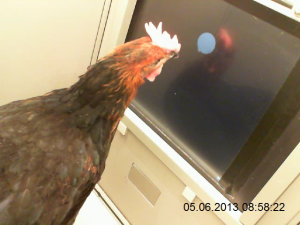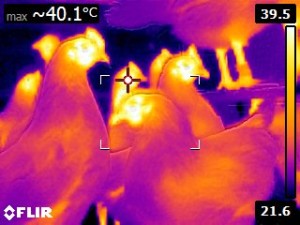Laboratory of Reproductive Physiology
Reproduction is essential for all living organisms. Although the fertilization process of mammals is well described, the involved molecules and their exact role are not fully illustrated. The fertilization process in mammals has some common features, however, processes occurring at molecular level and consequently the expression of proteins in gametes and reproductive tissues are species-dependent. Therefore, the characterization of previously unidentified molecules is significant not only in terms of basic research in reproductive biology, but also for understanding pathological changes at the molecular level. Laboratory of reproductive physiology has focused in recent years on proteins of the tetraspanin family, whose specific structure allows the formation of tetraspanin web (complex of tetraspanins with another partner molecules) which is active on cell membranes.
This very dynamic structure is involved not only in many somatic cell functions such as motility, signalling, immune response, but also in processes associated with fertilization. The subject of our study is tetraspanin web and its role in maturation of gametes (sperm and oocytes) and their interaction during the fertilization process in cattle. In collaboration with the Laboratory of reproductive biology of the Biotechnology Institute of the Academy of Sciences of the Czech Republic in Prague, we have the opportunity to study the interspecies differences in the structure and activity of tetraspanin web also on mouse and pig models.
More information about the Laboratory of reproductive physiology.

Laboratory of Poultry Behaviour and Welfare

Article 13 of the Treaty on the Functioning of the European Union recognises animals as sentient beings and requires full regard be given to the welfare requirements of animals while formulating and enforcing some EU policies in various fields, including agriculture. Chickens are the world’s most widely farmed animal, kept for both meat and egg production. According to FAO, in 2016 the global chicken population was over 22 billion birds. That is one of the reasons why “quality of life” of poultry is in the centre of interest of general public, as well as scientific research.
 Animal welfare research has been historically over a long time focused on negative phenomena, such as fear, pain or suffering. The research of our laboratory was also initially focused (and still is) on abnormal behaviour of poultry, such as food restriction induced stereotyped behaviour in broiler breeders, or feather pecking in laying hens. Our approach is characterized by a combination of behavioural methods with physiological and other indicators (radiotelemetric measurement of blood pressure, heart rate and EEG, identification of neurotransmitter systems involved in the control of behaviour through pharmacological manipulation, use of quantitative ligand autoradiography and in situ hybridization for the assessment of dopamine receptors in brain, use of infrared thermovision for the assessment of feather cover).
Animal welfare research has been historically over a long time focused on negative phenomena, such as fear, pain or suffering. The research of our laboratory was also initially focused (and still is) on abnormal behaviour of poultry, such as food restriction induced stereotyped behaviour in broiler breeders, or feather pecking in laying hens. Our approach is characterized by a combination of behavioural methods with physiological and other indicators (radiotelemetric measurement of blood pressure, heart rate and EEG, identification of neurotransmitter systems involved in the control of behaviour through pharmacological manipulation, use of quantitative ligand autoradiography and in situ hybridization for the assessment of dopamine receptors in brain, use of infrared thermovision for the assessment of feather cover).
The latest research of our laboratory is focused on cognition and emotions in poultry. The interaction between cognition and emotion represent an unforeseen source of information for animal welfare science. Emotions influence cognitive performance not only in humans, but also in animals, that can be used in the design of the so-called cognitive bias tests. In designing such tests for poultry, we use operational discriminatory learning in the custom Skinner box with a touchscreen. Our goal is to develop new animal-based measurements to assess poultry welfare.

Laboratory of Neurobiology
We study neurobiological basis of behavior with the emphasis on acoustic communication in birds. We use songbirds as a model as they are able to learn and imitate sounds. They possess a well described, discrete and specialized brain circuits controlling song learning and production. Although song is undoubtedly much simpler than the human language, they share many behavioral, genetic, anatomical, and neural parallels.
Recently, the laboratory of neurobiology focuses mostly on two topics of research. The first one is related to identification and finding the function of brain vocal nuclei. Although the brain circuits controlling the song are known, their exact function has been still studied. Our results point to the existence of a new brain area involved in song control and its role for vocal learning/production is unknown. The second topic of our interest is the functional significance and mechanisms of neurogenesis in the adult brain. We study mechanisms involved in brain repair after its injury, factors affecting cell proliferation and their incorporation into brain areas, and the function of the newborn neurons for behavioral plasticity.
We use a multidisciplinary approach that combines behavioral (analyses of sound parameters, preferences for listening to a certain song type), anatomical (tract tracing, brain surgeries, pharmacological manipulation of brain areas), and molecular biology techniques (immunohistochemistry, in situ hybridization). Important is the integration of the non-invasive magnetic resonance imaging method that enables repeated brain measurements in the same individual.

More information about the Laboratory of neurobiology
Laboratory of Avian Embryology and Cell Cultures
We can see in experimental practice more frequent use of avian embryos  as a replacement of mammalian models. Dense capillary network of chorioallantoic membrane (CAM) is suitable for the study of tumor angiogenesis and antivascular therapy. CAM is structurally similar to the retina, lung and placenta, as well as tissue of blood-brain barrier. Our laboratory using the Japanese quail CAM model for the study of cancer angiogenesis, photodynamic diagnosis and therapy as wel as for the development of new biophotonic techniques.
as a replacement of mammalian models. Dense capillary network of chorioallantoic membrane (CAM) is suitable for the study of tumor angiogenesis and antivascular therapy. CAM is structurally similar to the retina, lung and placenta, as well as tissue of blood-brain barrier. Our laboratory using the Japanese quail CAM model for the study of cancer angiogenesis, photodynamic diagnosis and therapy as wel as for the development of new biophotonic techniques.
 Contact
Contact SK
SK